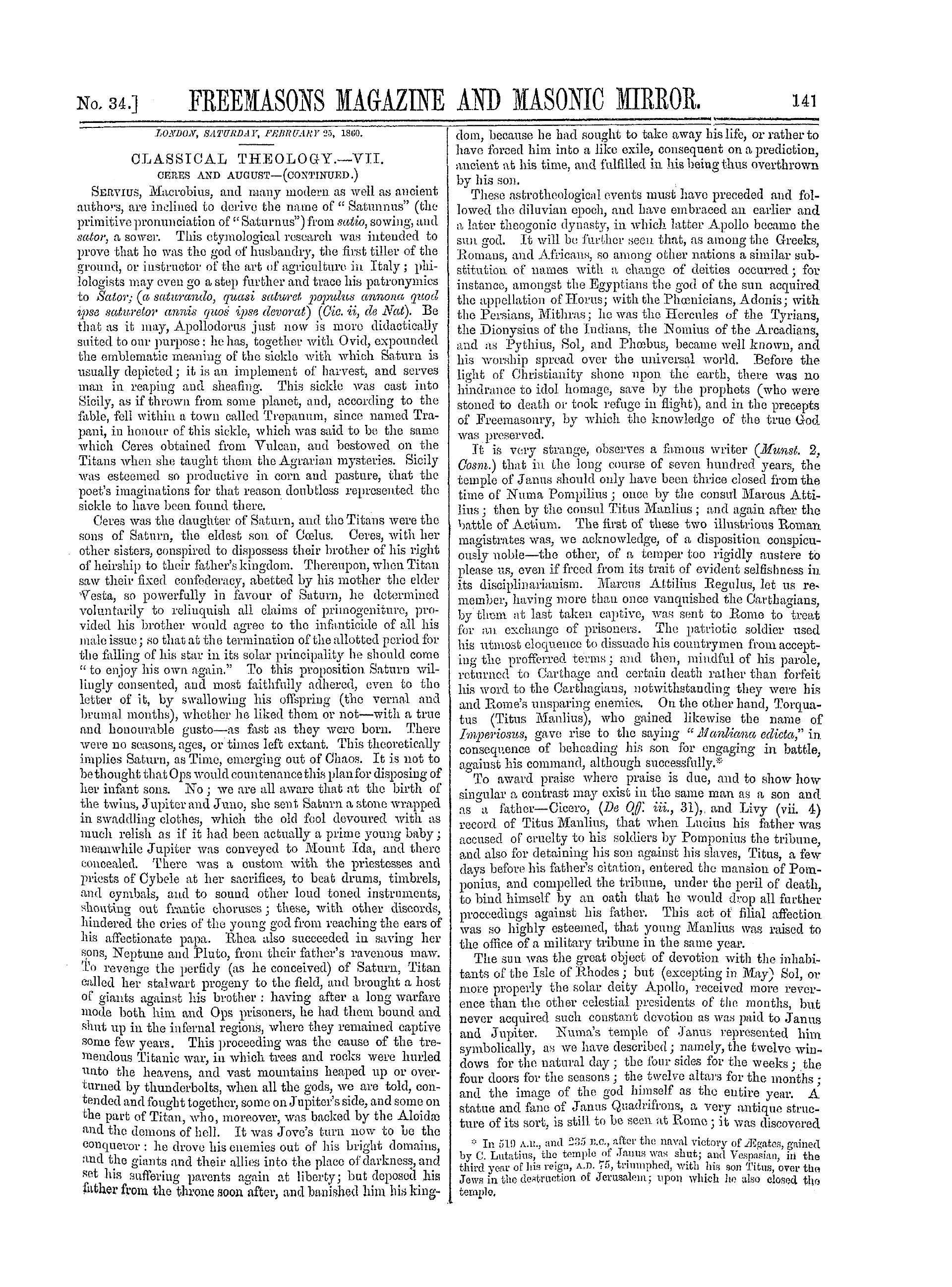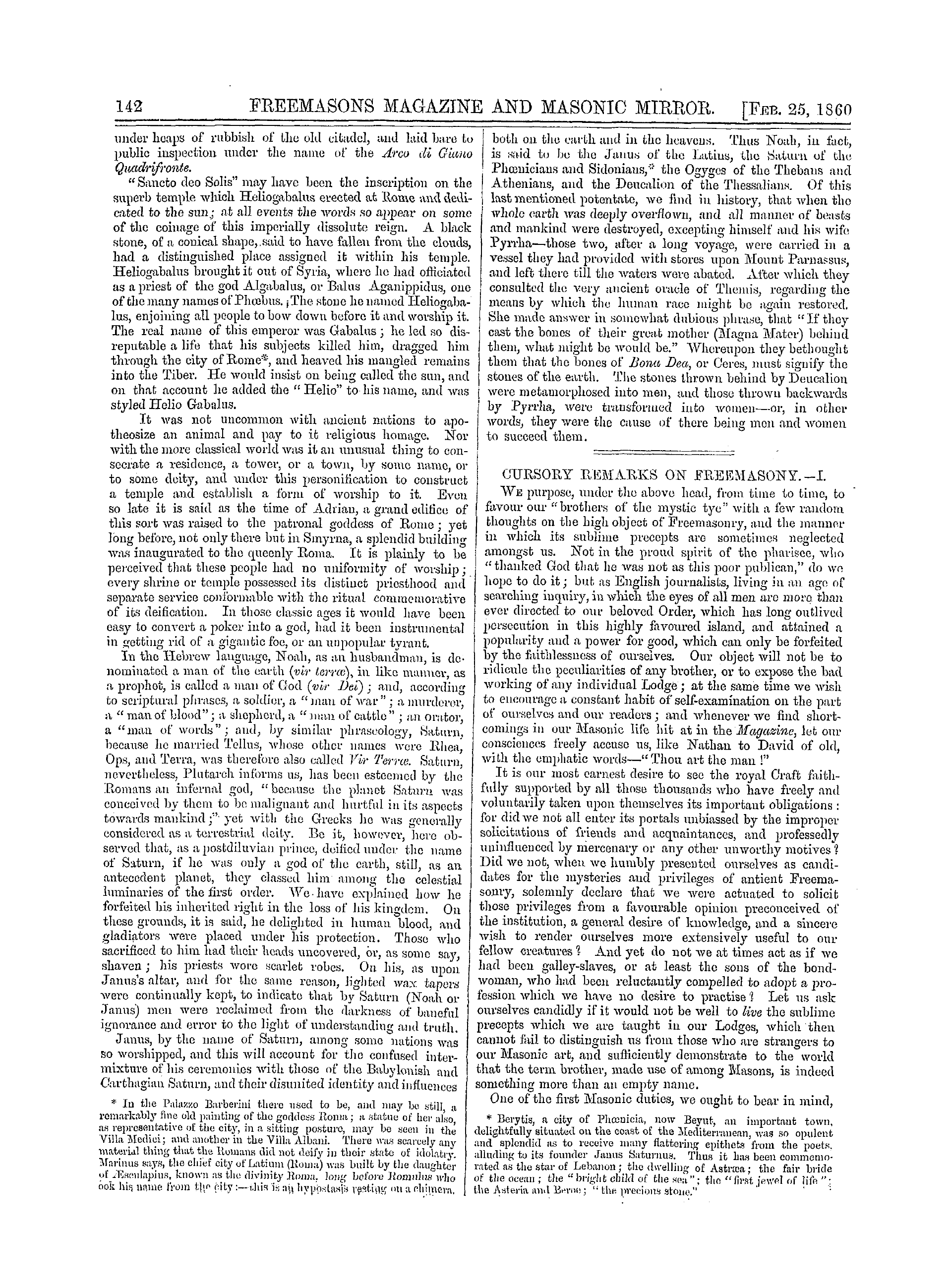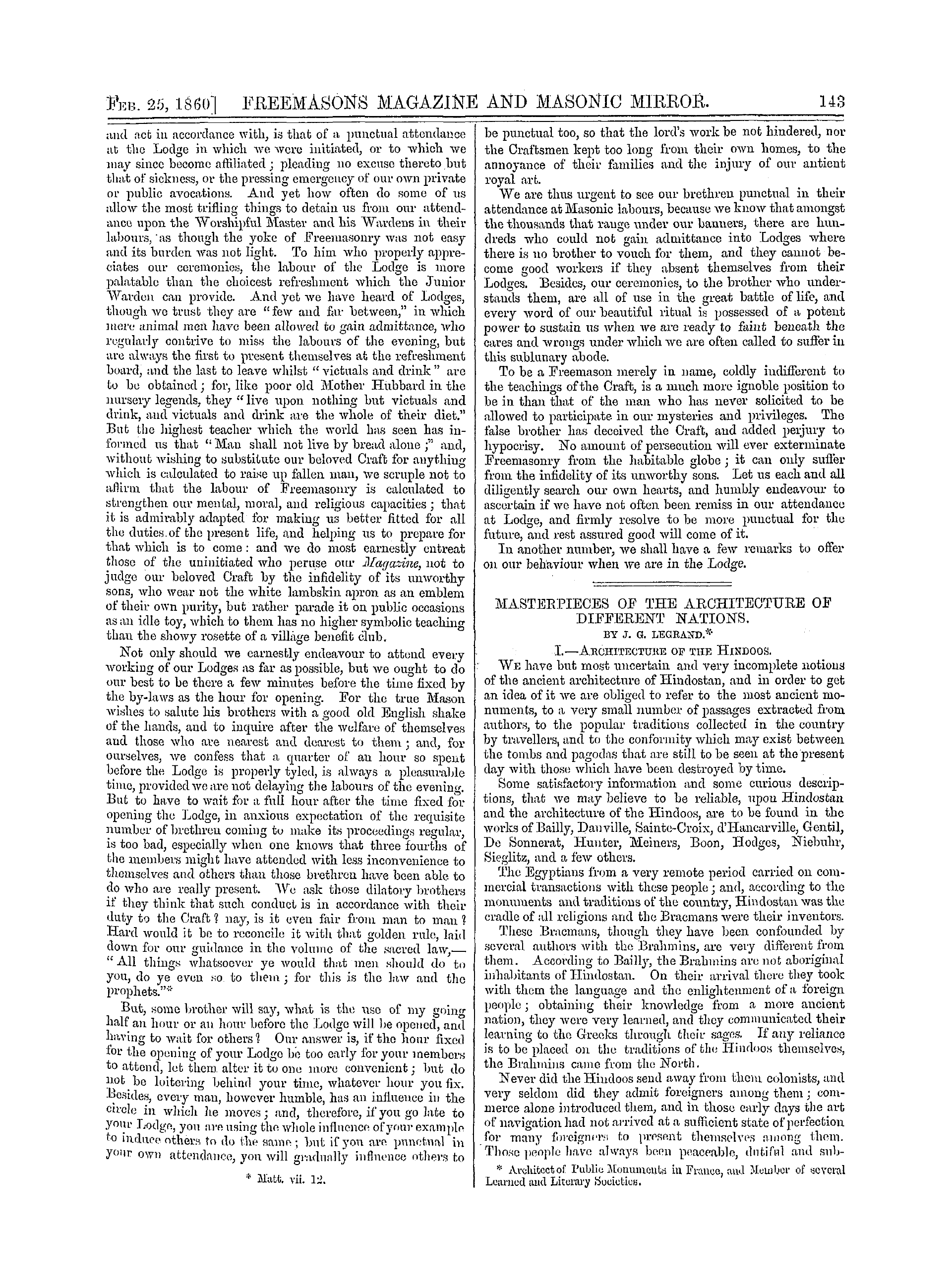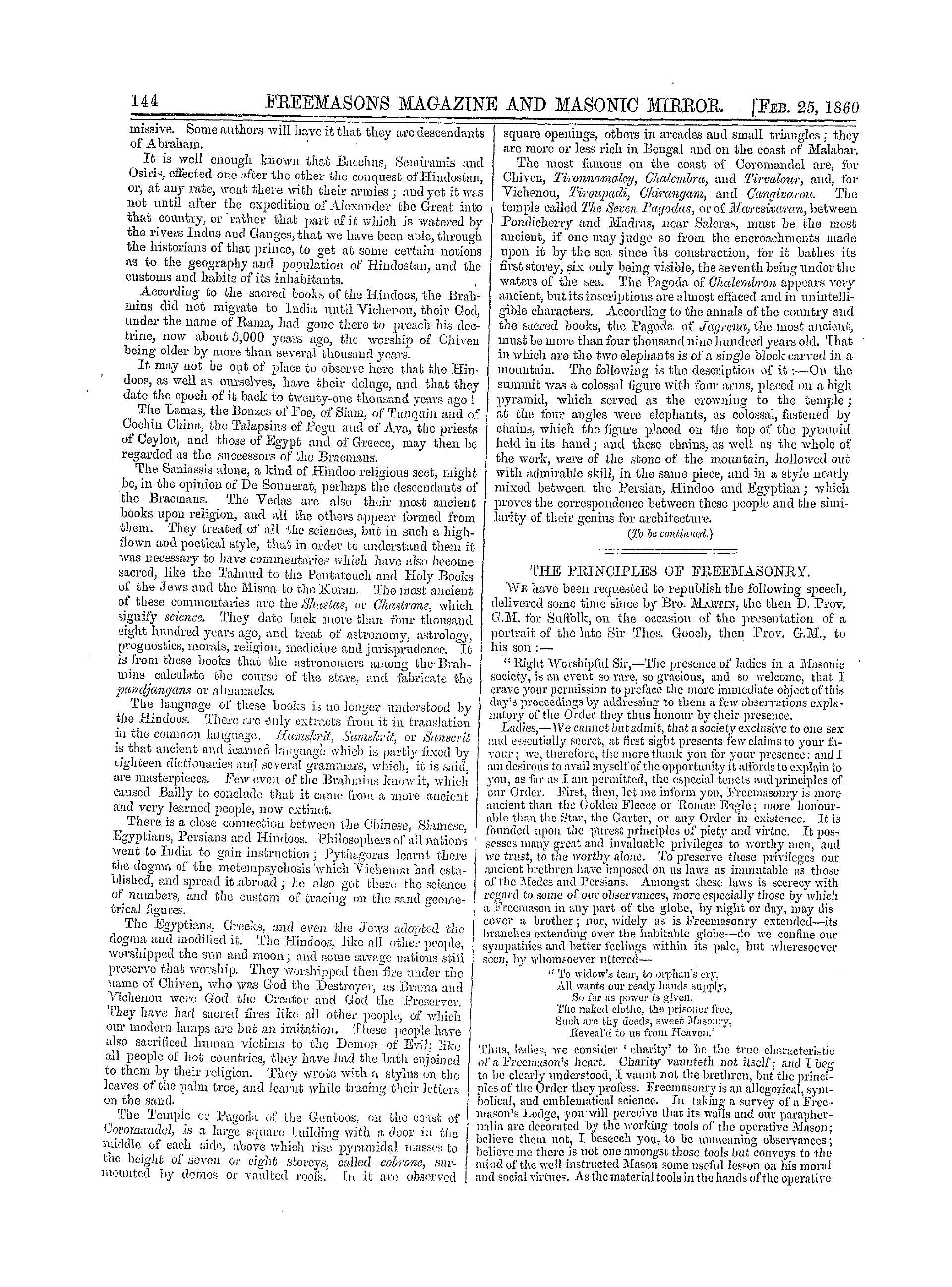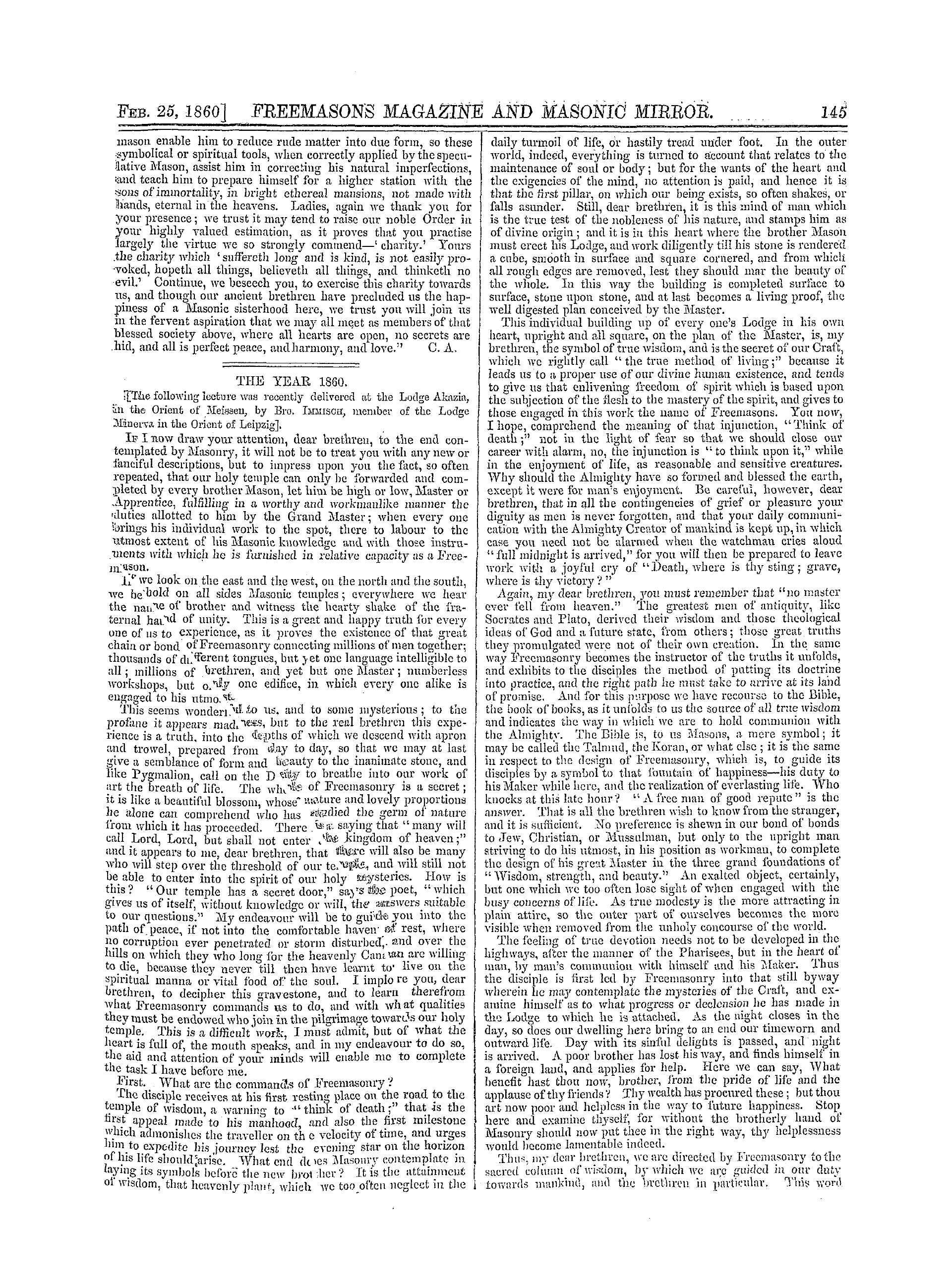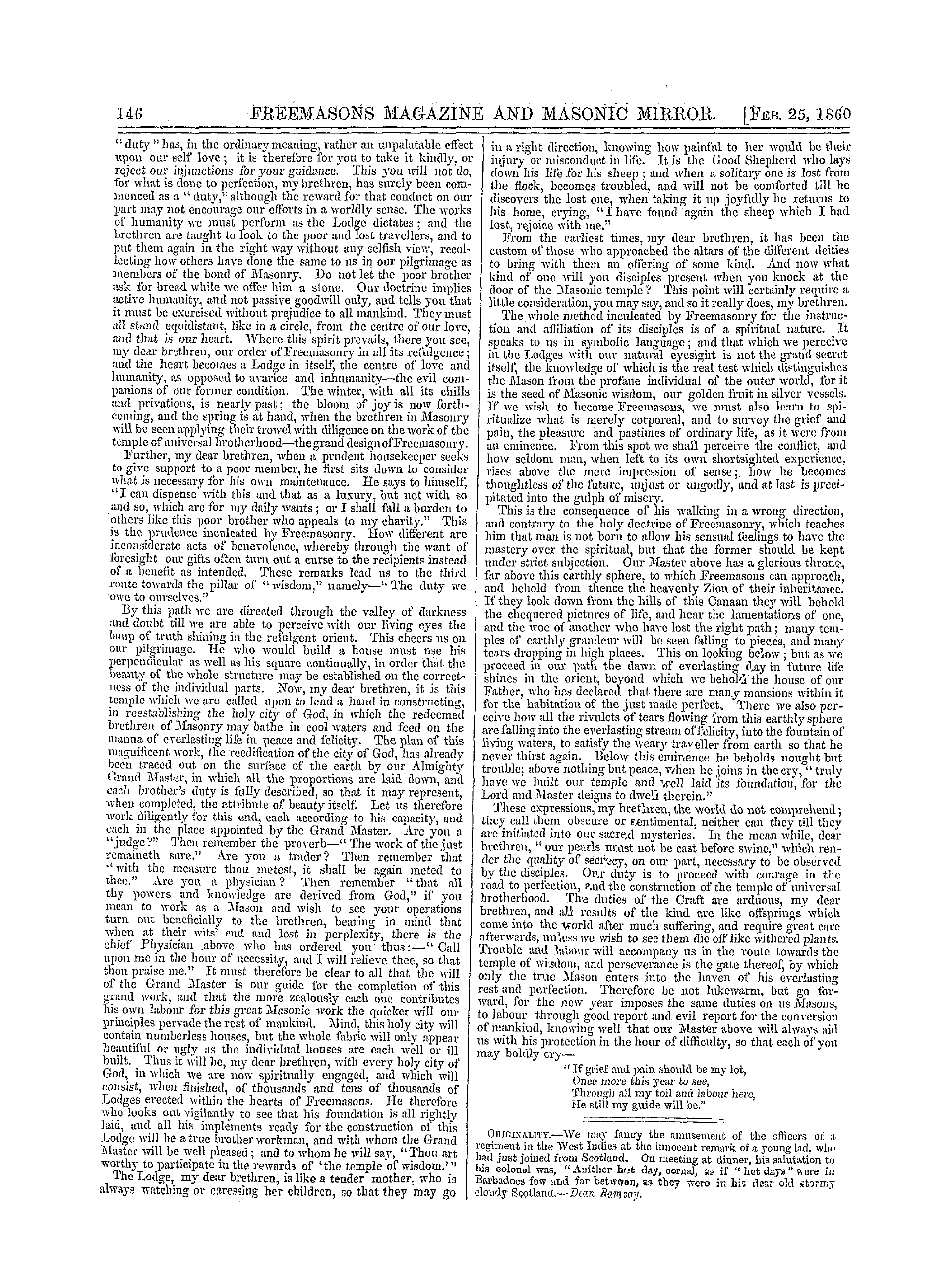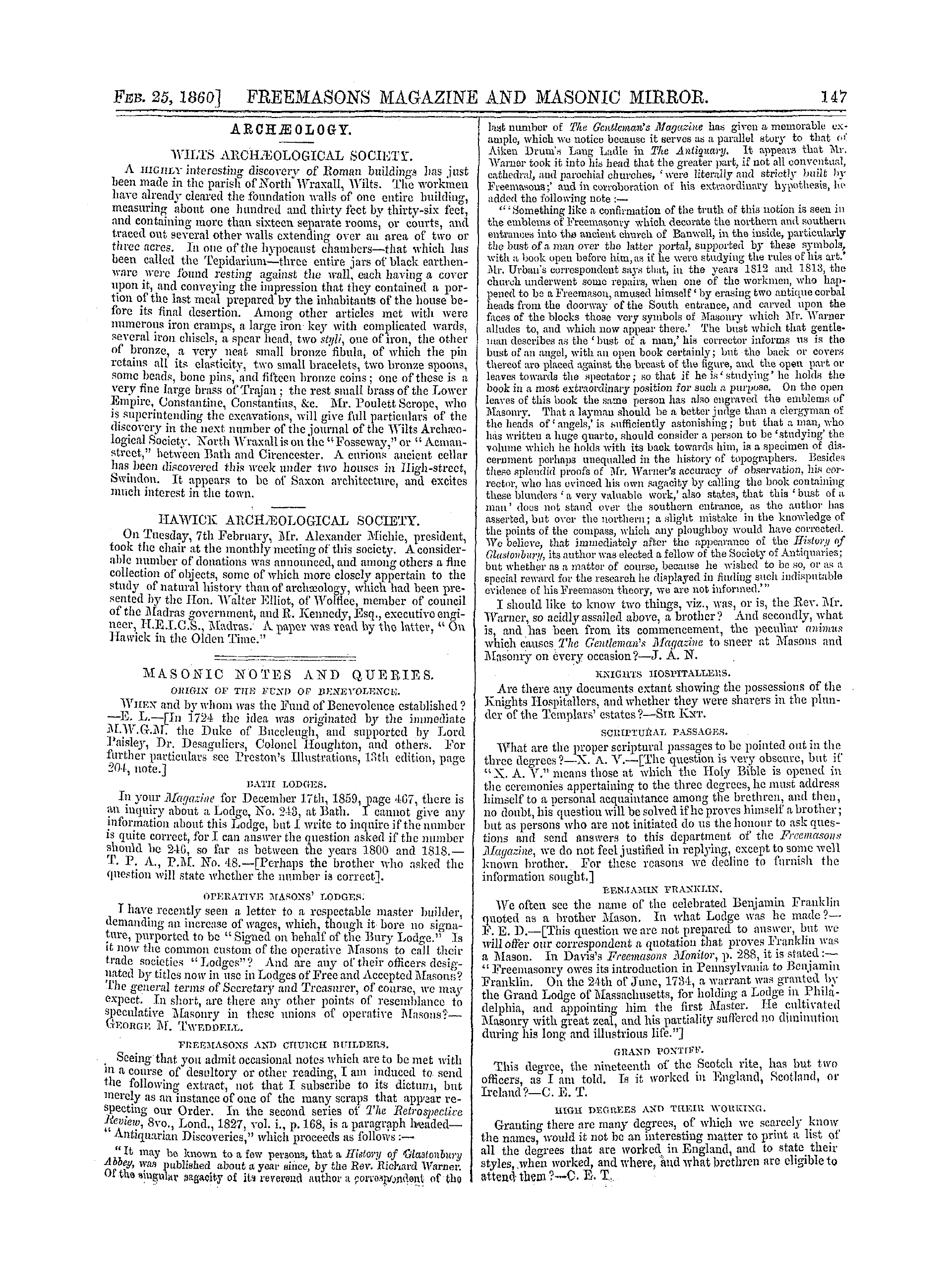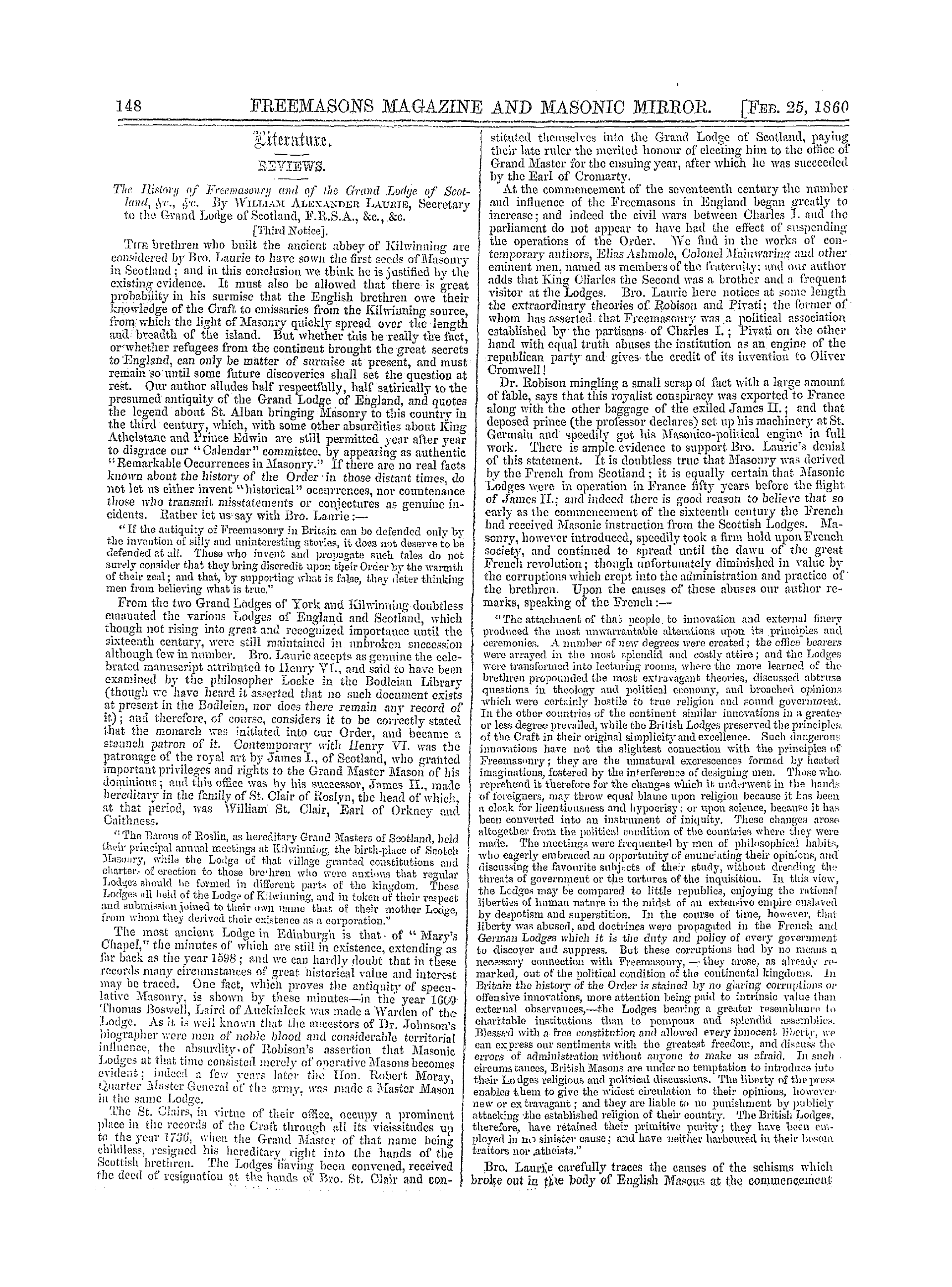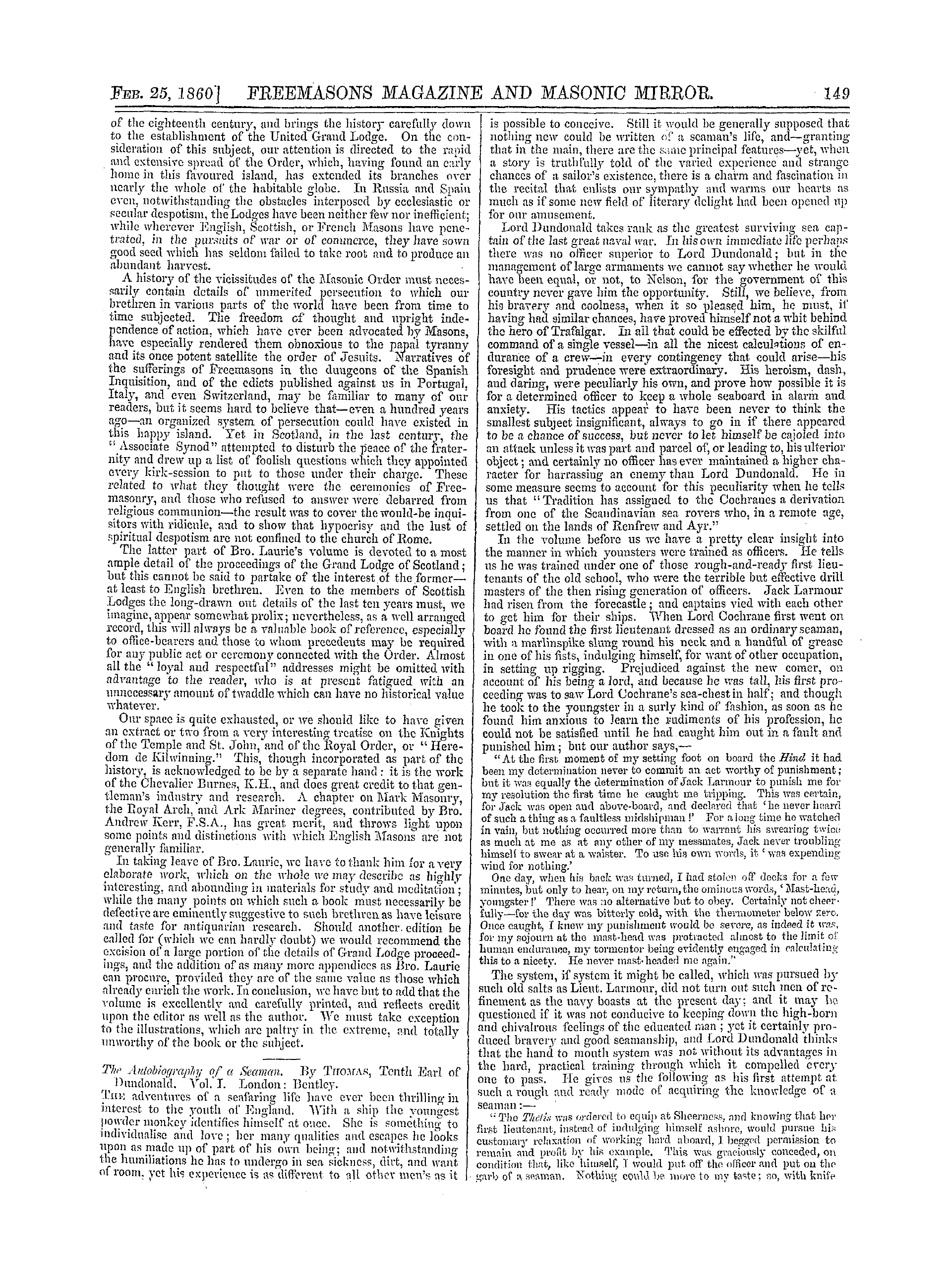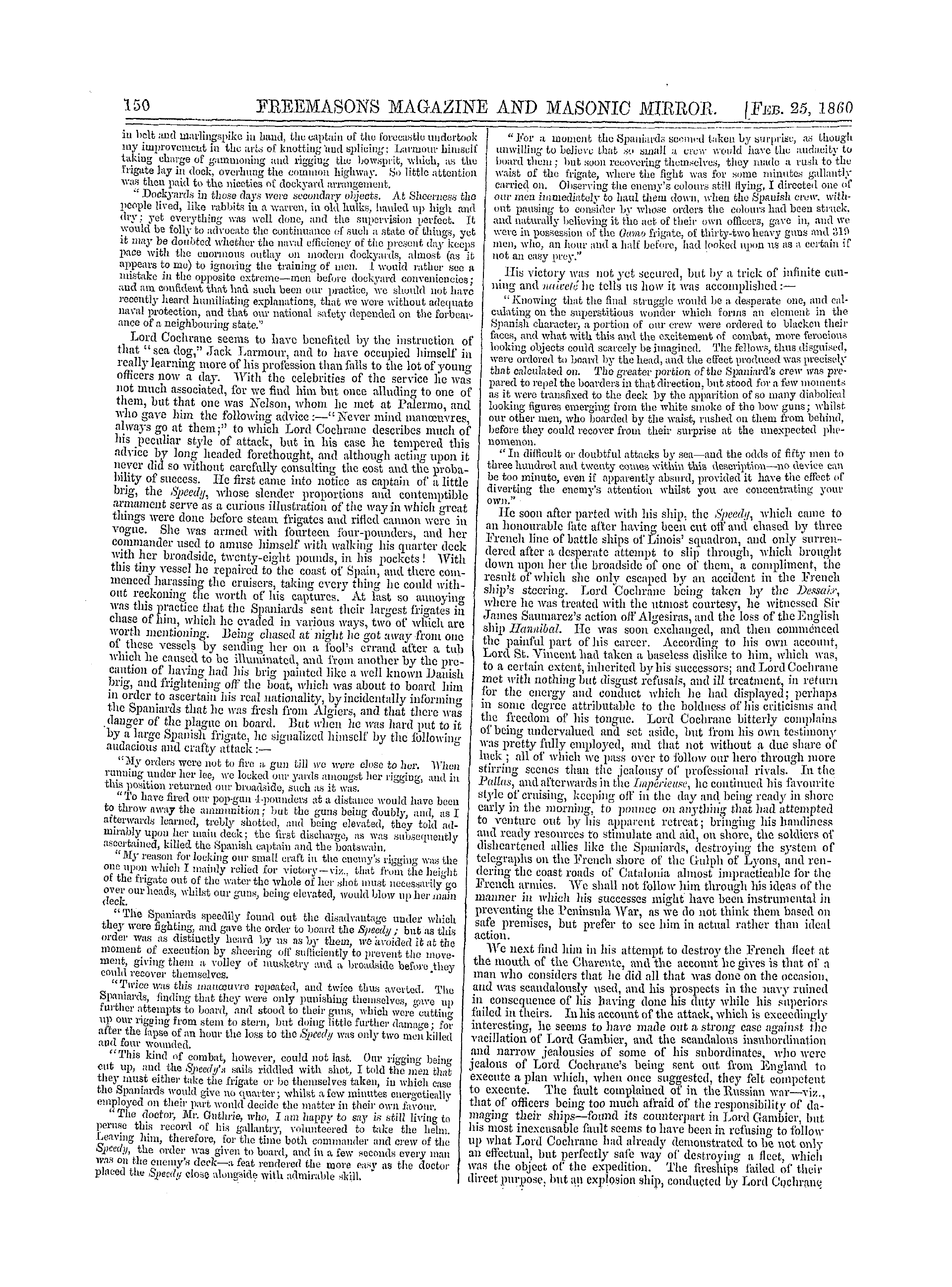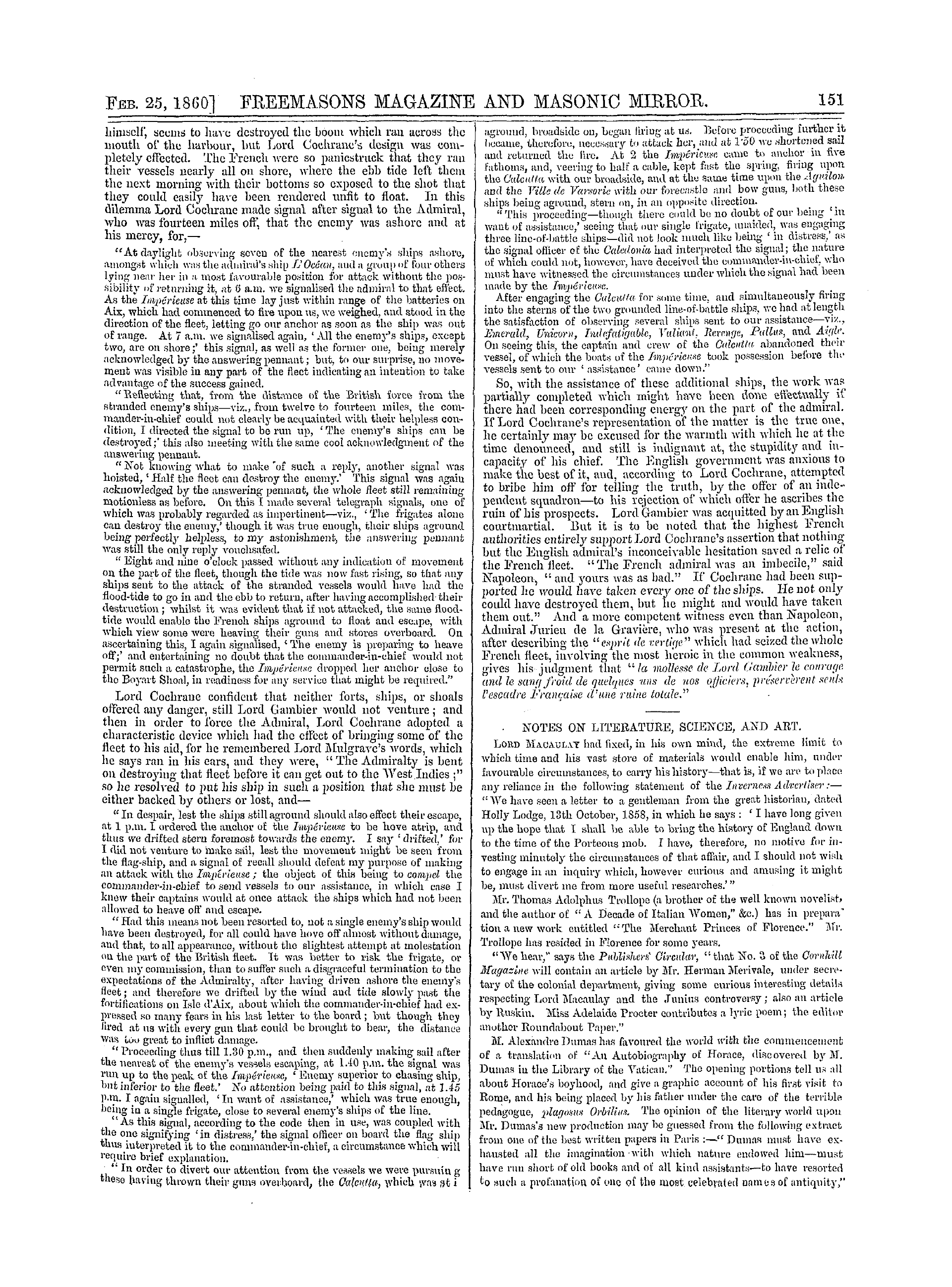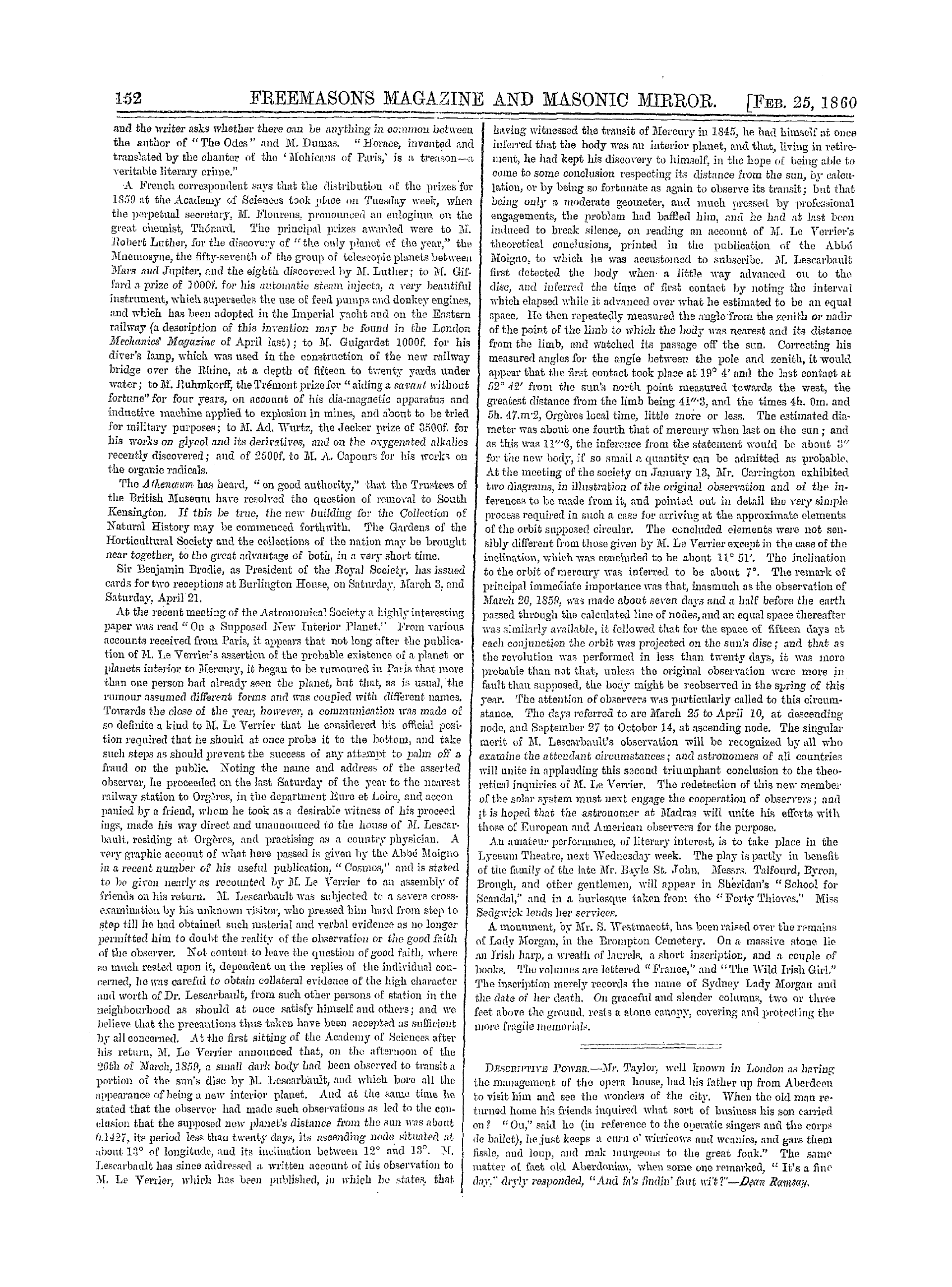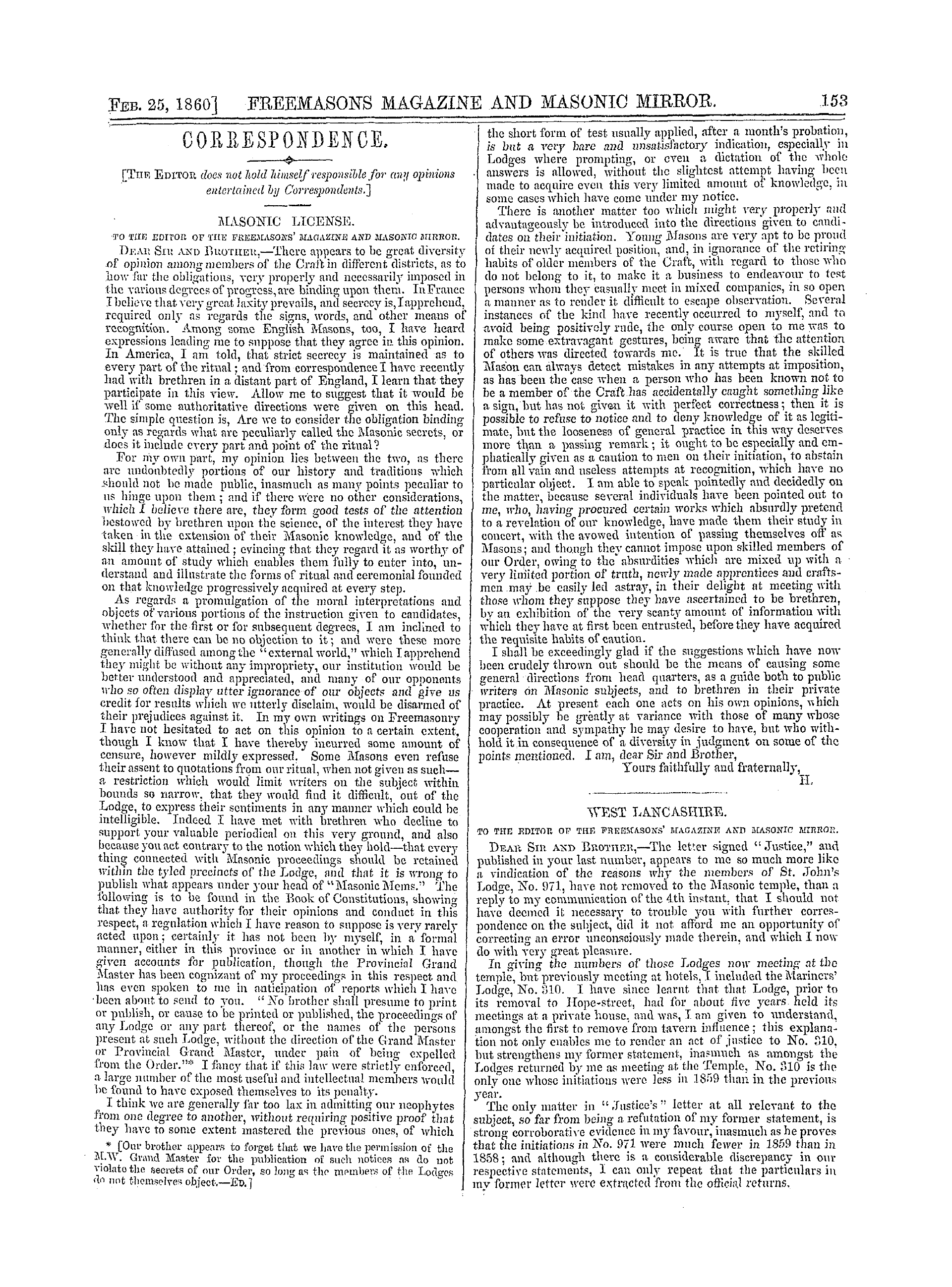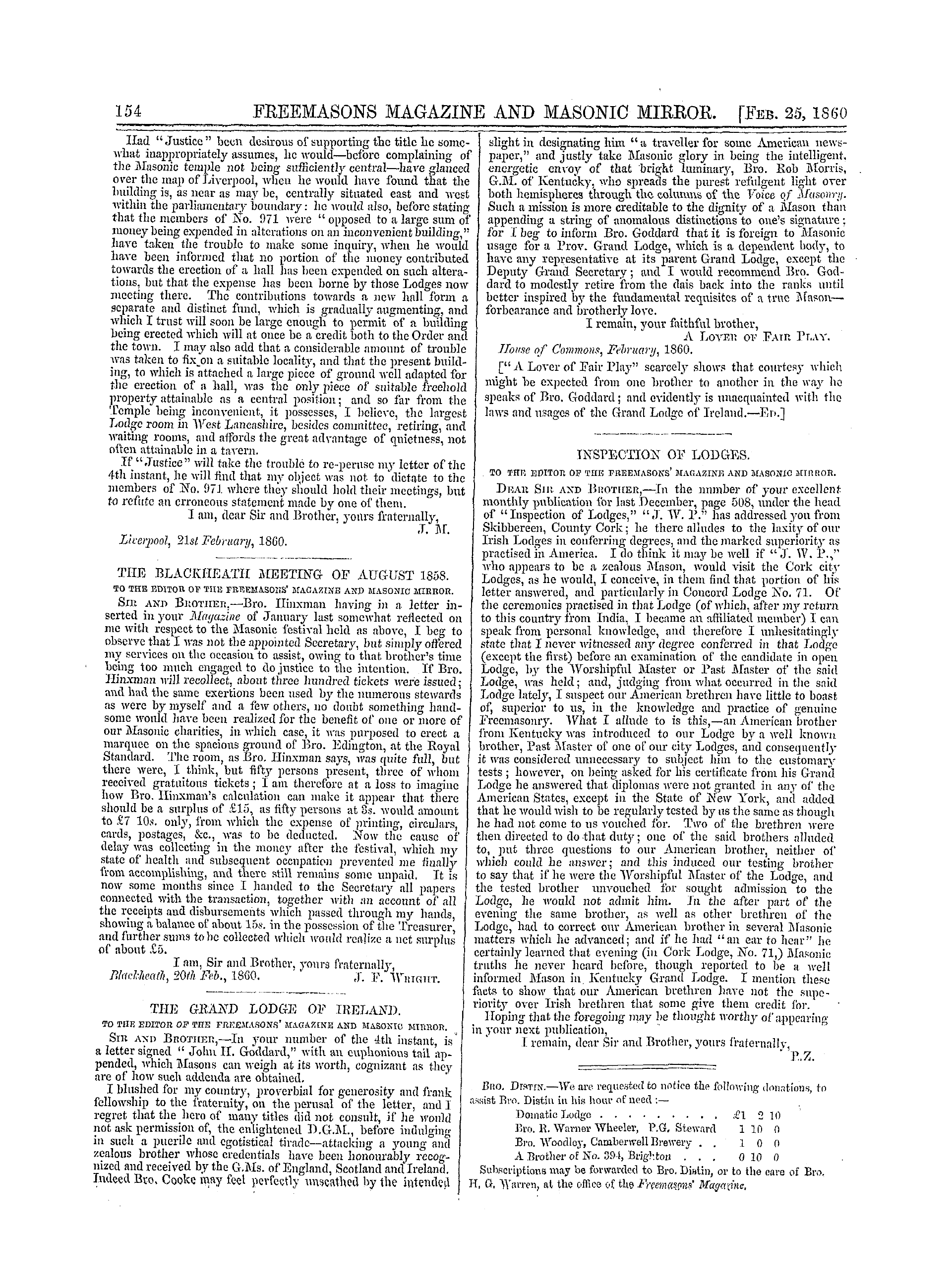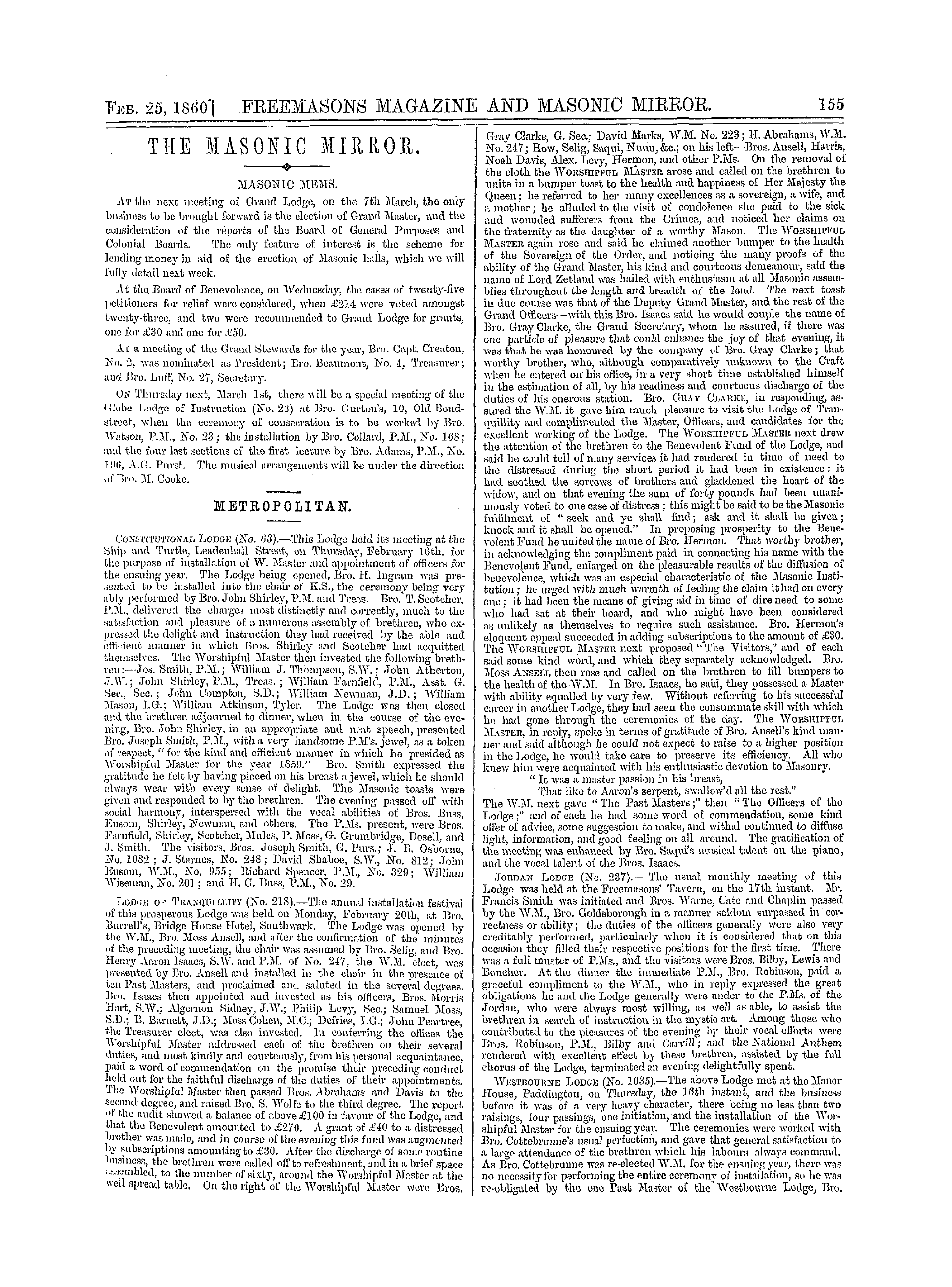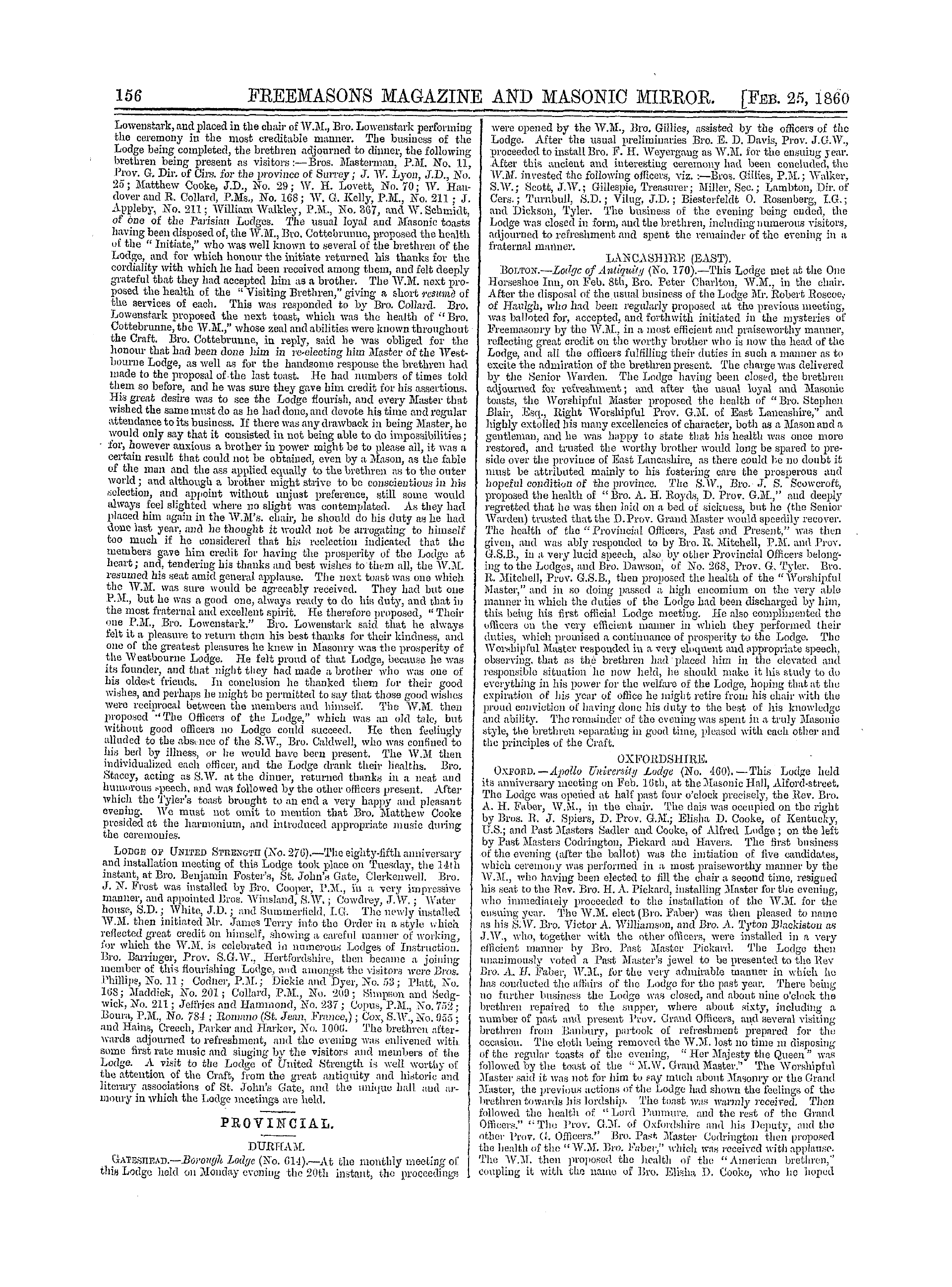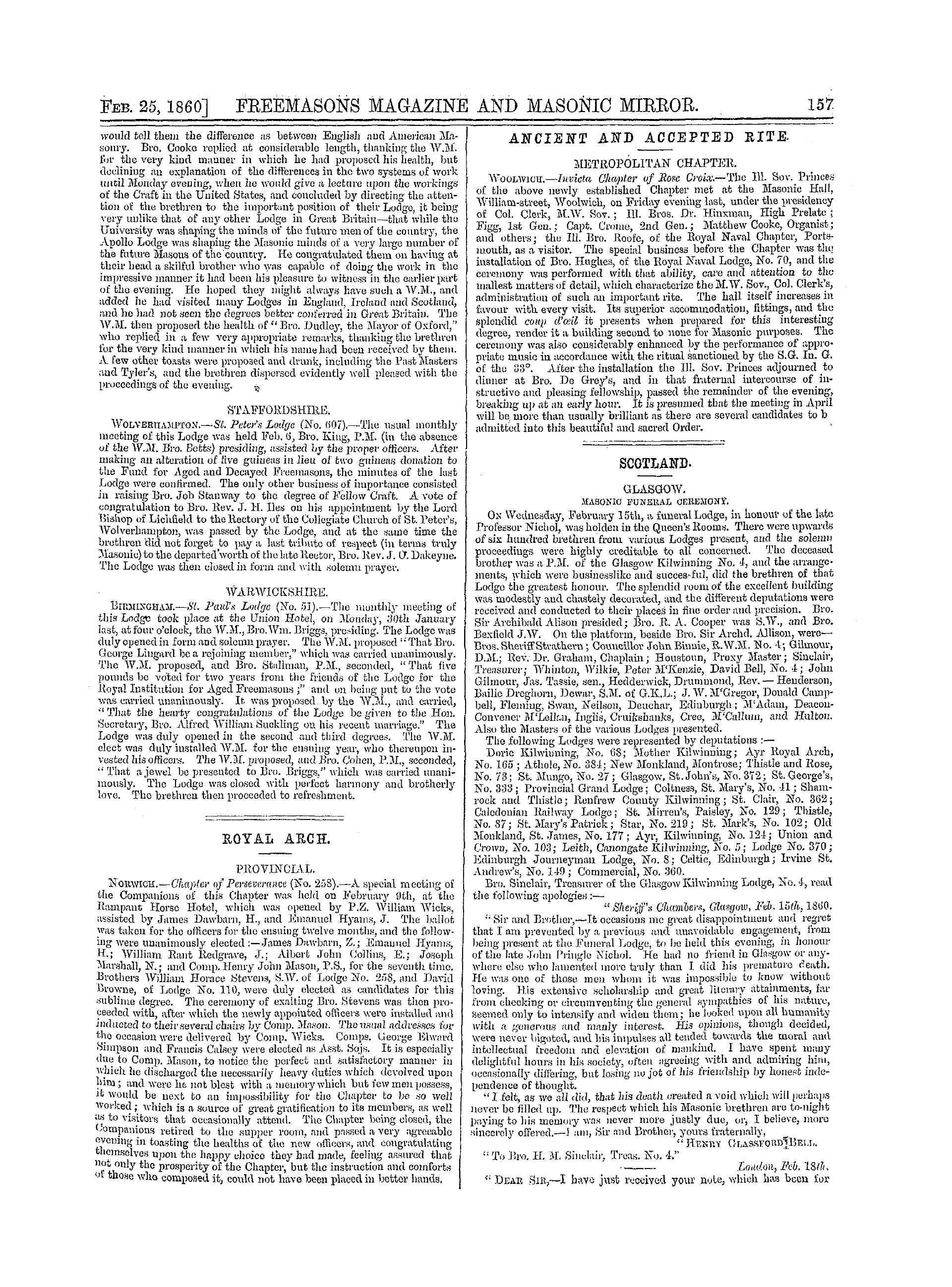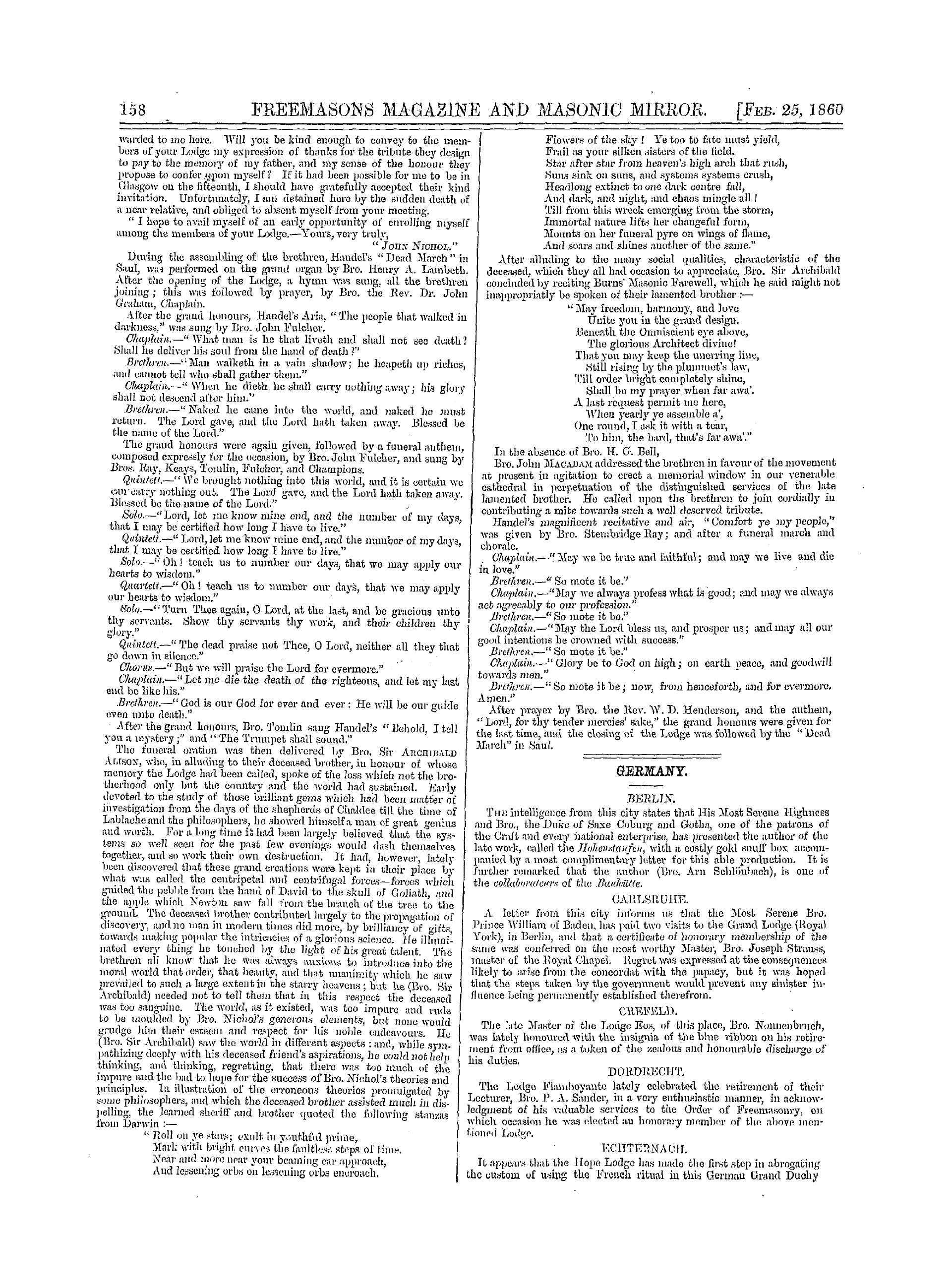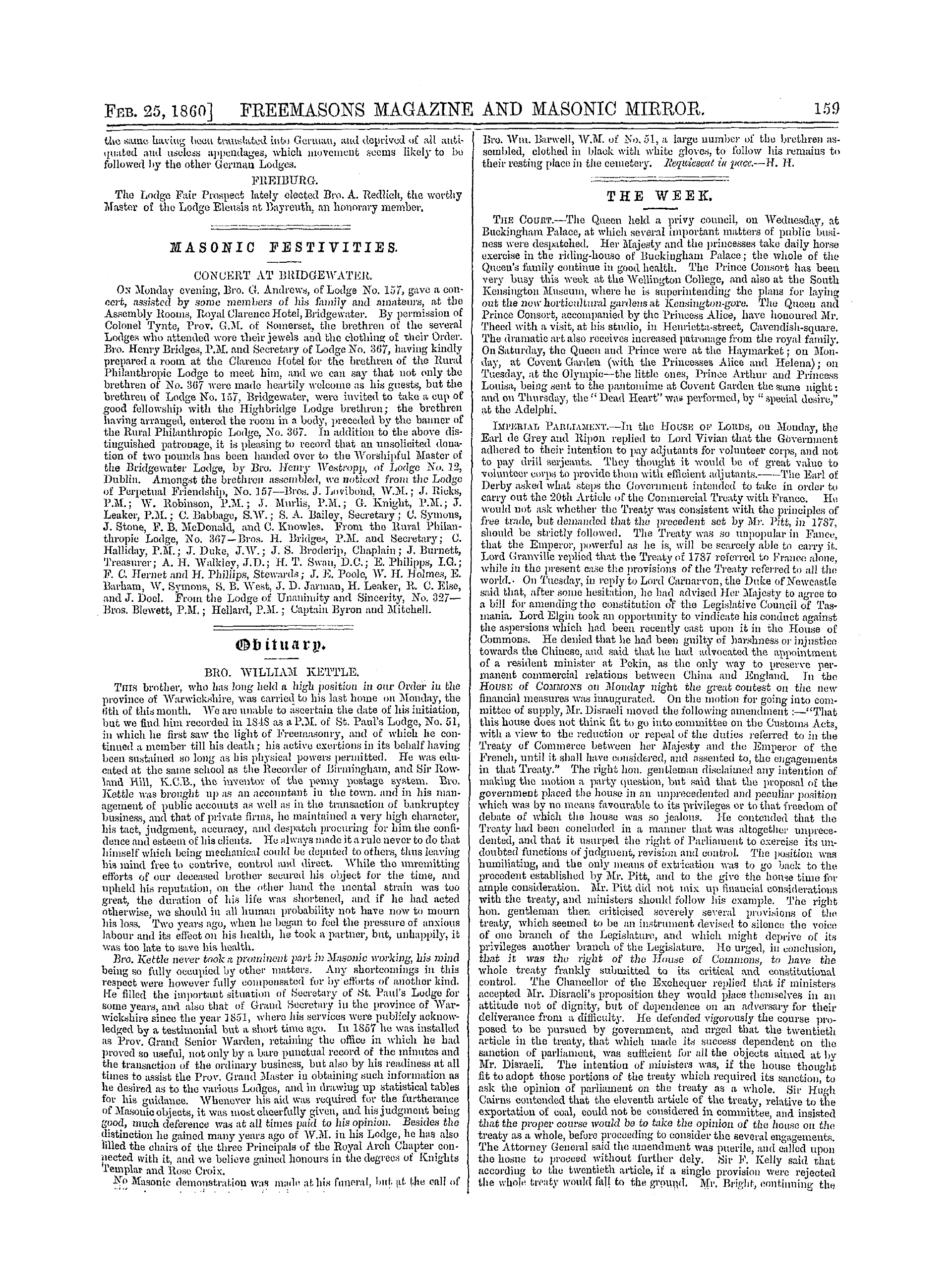-
Articles/Ads
Article Literature. ← Page 5 of 5
Note: This text has been automatically extracted via Optical Character Recognition (OCR) software.
Literature.
and the writer asks whether there can be anything in common between the author of " The Odes " and M . Dumas . " Horace , invented ancl translated by the chanter of the 'Mohicans of Paris , ' is a treason—a veritable literary crime . " A French correspondent says that the distribution of the prizes for IS ;> S ! at the Academy of Sciences took place on Tuesday iveek , when the perpetual secretary , JI . Flourens , pronounced an eulogiuin on the
great chemist , Th 6 nard . Tho principal prizes awarded were to M . i . oberfc Luther , for the discovery of "the only planet of the year , " the Mneuiosyue , the fifty-seventh of the group of telescopic planets between Mars mid Jupiter , and the eighth discovered by M . Luther ; to M . Gif-I ' ard a prize oi lOOOf . for his automatic steam injeota , n very beautiful instrument , which supersedes the use of feed pumps and donkey engines , and which has been adopted in the Imperial yacht and on the Eastern
railway fa description oi this invention mny be found in the London Mechanics' Magazine of April last ); to M . Guigardet lOOOf . for his diver ' s lamp , which was used in the construction of the new railway bridge over the Rhine , at a depth of fifteen to twenty yards under water ; to M . Ruhmkorff , the Tremont prize for " aiding a savant without fortune" for four years , on account of his clia-magnetic apparatus and inductive machine applied to explosion in mines , ancl about to be tried
for military purposes ; to M . Ad . Wurtz , the decker prize of SoOOf . for his works on glycol and its derivatives , and on the oxygenated alkalies recently discovered ; and of 2500 f . to M . A . Capours for his works on the organic radicals . The Athenceum has heard , " on goocl authority , " that the Trustees oi the British Museum have resolved the question of removal to South Kensington . If this be true , the new building for the Collection ol Natural History may be commenced forthwith . The Gardens of the Horticultural Society and the collections of the nation may be brought near together to the great advantage of both , in a very short time .
Sir Benjamin Erodie , as President of the Royal Society , has issued cards for two receptions at Burlington House , on Saturday , JIarch 3 , and Saturday , April 21 . At the recent meeting of the Astronomical Society a highly interesting paper was read " On a Supposed New Interior Planet , " From various accounts received from Paris , it appears that not long after the publication of M . Le Terrier ' s assertion o £ the probable existence of a planet or
planets interior to Mercury , ifc began to be rumoured in Paris that more than one person had already seen the planet , but that , as is usual , the rumour assumed different forms and was coupled with different names . Towards the close of fche rem ; however , a communkatioii was made of so definite a kind to M . Le Terrier that he considered his official position required that he should at once probe it to the bottom , and take such steps as should prevent the success of any altsmpt to pnhn off a
fraud ou the public . Noting the name and address of the asserted observer , he proceeded on the last Saturday of the year to the nearest railway station to OrgJres , in the department Eure et Loire , ancl accon panied by a friend , whom he took as a desirable witness of his proceed tugs , made his way direct and unannounced to ihe , house of M . Lesearbault , residing at Orgeres , ancl practising as a country physician . A very graphic account of what here passed is given by the Abbe Moigno in a recent number of his useful publication , " Cosmos , " and is stated
to he given nearly as recounted by 31 . Le v errier to an assembly oi friends on his return . M . Lescarbault was subjected to a severe crossexamination by his unknown visitor , who pressed him hard from step to step till he had obtained such material and verbal evidence as no longer permitted him to doubt the reality of the observation or the good fifth of the observer . Not content to leave the question of good faith , where so much rested upon it , dependent on the replies of the individual
concerned , lie was careful to obtain collateral evidence of the high character aud worth of Dr . Lescarbault , from such other persons of station in the neighbourhood as should at once satisfy himself ancl others ; ancl we believe that the precautions thus taken have been accepted as sufficient by all concerned . At the first sitting of the Academy of Sciences after his return , M . Le Terrier announced that , on the afternoon of the 2 Cfch of March , lSfl . 9 , a . small dart body had been observed to transit a
portion of the sun ' s disc by M . Lescarbault , and which bore all the appearance of being a new interior planet . And at tiie same time Uc stated that the observer had made such observations as led to the conclusion that the supposed new planet's distance from the sun ivas about 0 . 1127 , its period less than twenty days , its ascending node situated at about 13 ° of longitude , and its inclination between 12 ° and 13 ° . J \ f . Lescarbault has since addressed -. _ written account of his observation to M . Le Terrier , wliich has been published , in which he states , that
having witnessed the transit of Mercury in 1845 , he had himself at once inferred that the body was an interior planet , and that , living in retirement , he had kept his discovery to himself , in the hope of being able to come to some conclusion respecting its distance from the sun , by calculation , or by being so fortunate as again to observe its transit ; but that being only __ moderate geometer , and much pressed by x > rofessional engagements , the problem had baffled him , and he hacl at last boon
induced to break silence , on reading an account of M . Le Terrier ' s theoretical conclusions , printed in the publication of the Abbe Moigno , to which lie was accustomed to subscribe . M . Lescarbault first detected the body when- a little way advanced ou to the disc , aud interred the time of first contact by noting tho interval which elapsed while it advanced over what he estimated to be an equal space . He then repeatedly measured the angle from the zenith or nadir
of the point of tho limb to which the body ivas nearest and its distance from the limb , and watched its passage off the sun . Correcting his measured angles for the angle between the pole ancl zenith , it would appear that tbe first contact took place at 19 ° 4 ' and the last contact at . 12 ° 42 ' from the sun ' s north point measured towards the west , the greatest distance from the limb being 41 " - " , and the times 4 h . 0 m . ancl oh . 47 . m' 2 , Orgcros local time , little more or less . The estimated
diameter was about one fourth that of mercury when last on the sun ; and as this was 1 VQ , the inference from the statement would be about 2 " for the new body , if so small a quantity can be admitted as probable . At the meeting of the society on January 13 , Mr . Carrington exhibited two diagrams , in illustration of the original observation and of the inferences to be made from it , and pointed out in detail the very simple process required in such a ease for arriving at the approximate elements
of the orbit supposed circular . The concluded elements were not sensibly different from those given by M . Le Terrier except iu the case of the inclination , which was concluded to be about 11 ° 51 ' . The inclination to the orbit of mercurv was inferred to be about " 1 ° . The remark of
principal immediate importance was that , inasmuch as the observation of March 20 , 185 P , was made about seven days ancl a half before the earth passed through the calculated lino of nodes , and an equal space thereafter was similarly available , it followed that for the space of fifteen days at each coiijunctien tho orbit wss projected on the sun ' s disc ; and that- as the revolution was performed in less than twenty days , it was more probable than not that , unless the original observation were more in
fault than supposed , the body might be reobserved in the spring- of this year . The attention of observers was particularly called to this circumstance . The clays referred to are March 25 to April 10 , at descendingnode , and September 27 to October 14 , at ascending node . The singular merit of M . Lescarbault's observation will bo recognized by all who examine the attendant circumstances ; and astronomers of all countries will unite in applauding this second triumphant conclusion to the
theoretical inquiries of M . Le Terrier . The redeteetion of this new member ofthe solar system must next engage the cooperation of observers ; ancl ; t is hoped that the astronomer at Madras will unite his efforts with those of European ancl American observers for the purpose . An amateur performance , of literary interest , is to take place in the Lyceum Theatre , next "Wednesday week . The play is partly in benefit of the family of the late Mr . Bayle St . John , Messrs . Talfourd , Byron ,
Brough , and other gentlemen , will appear in Sheridan ' s " School for Scandal , " and in a burlesque taken from the " Forty Thieves . " Miss Sedgwick lends her services . A monument , by Mr . S . Westmacott , has been raised over the remains of Lady Morgan , in the Broinptou Cemetery . On a massive stone lie an Irish harp , a wreath of laurels , a short inscription , and a couple of books . The volumes are lettered "France , " and "The Wild Irish Girl . "
The inscription merely records the name of Sydney Lady Morgan and the date of her death . On graceful and slender columns , two or three feet above the ground , rests a stone canopy , covering and protecting the more fragile memorials .
DascniPTiVis Poii ' -TiB . —Mr . Taylor , ivell knoivn in London as having the management of the opera house , had his father up from Aberdeen to visit him and see the wonders of the city . When the old man returned home his friends inquired what sort of business his son carried on ? " Ou , " said he ( in reference to the operatic singers ancl the corps de ballet ) , lie just keeps a curn o' ivfrricoivs and weanios , and gars them fissle , and loup , and mat iniirgeoi . s to the great fouk . " Tho same matter ot fact old Abevdoniiui , when some one remarked , " It's a fine d-i . v , " di-rJr responded , "And fa ' s findhf taut wi't ?" — £ >( an Ramsay ,
Note: This text has been automatically extracted via Optical Character Recognition (OCR) software.
Literature.
and the writer asks whether there can be anything in common between the author of " The Odes " and M . Dumas . " Horace , invented ancl translated by the chanter of the 'Mohicans of Paris , ' is a treason—a veritable literary crime . " A French correspondent says that the distribution of the prizes for IS ;> S ! at the Academy of Sciences took place on Tuesday iveek , when the perpetual secretary , JI . Flourens , pronounced an eulogiuin on the
great chemist , Th 6 nard . Tho principal prizes awarded were to M . i . oberfc Luther , for the discovery of "the only planet of the year , " the Mneuiosyue , the fifty-seventh of the group of telescopic planets between Mars mid Jupiter , and the eighth discovered by M . Luther ; to M . Gif-I ' ard a prize oi lOOOf . for his automatic steam injeota , n very beautiful instrument , which supersedes the use of feed pumps and donkey engines , and which has been adopted in the Imperial yacht and on the Eastern
railway fa description oi this invention mny be found in the London Mechanics' Magazine of April last ); to M . Guigardet lOOOf . for his diver ' s lamp , which was used in the construction of the new railway bridge over the Rhine , at a depth of fifteen to twenty yards under water ; to M . Ruhmkorff , the Tremont prize for " aiding a savant without fortune" for four years , on account of his clia-magnetic apparatus and inductive machine applied to explosion in mines , ancl about to be tried
for military purposes ; to M . Ad . Wurtz , the decker prize of SoOOf . for his works on glycol and its derivatives , and on the oxygenated alkalies recently discovered ; and of 2500 f . to M . A . Capours for his works on the organic radicals . The Athenceum has heard , " on goocl authority , " that the Trustees oi the British Museum have resolved the question of removal to South Kensington . If this be true , the new building for the Collection ol Natural History may be commenced forthwith . The Gardens of the Horticultural Society and the collections of the nation may be brought near together to the great advantage of both , in a very short time .
Sir Benjamin Erodie , as President of the Royal Society , has issued cards for two receptions at Burlington House , on Saturday , JIarch 3 , and Saturday , April 21 . At the recent meeting of the Astronomical Society a highly interesting paper was read " On a Supposed New Interior Planet , " From various accounts received from Paris , it appears that not long after the publication of M . Le Terrier ' s assertion o £ the probable existence of a planet or
planets interior to Mercury , ifc began to be rumoured in Paris that more than one person had already seen the planet , but that , as is usual , the rumour assumed different forms and was coupled with different names . Towards the close of fche rem ; however , a communkatioii was made of so definite a kind to M . Le Terrier that he considered his official position required that he should at once probe it to the bottom , and take such steps as should prevent the success of any altsmpt to pnhn off a
fraud ou the public . Noting the name and address of the asserted observer , he proceeded on the last Saturday of the year to the nearest railway station to OrgJres , in the department Eure et Loire , ancl accon panied by a friend , whom he took as a desirable witness of his proceed tugs , made his way direct and unannounced to ihe , house of M . Lesearbault , residing at Orgeres , ancl practising as a country physician . A very graphic account of what here passed is given by the Abbe Moigno in a recent number of his useful publication , " Cosmos , " and is stated
to he given nearly as recounted by 31 . Le v errier to an assembly oi friends on his return . M . Lescarbault was subjected to a severe crossexamination by his unknown visitor , who pressed him hard from step to step till he had obtained such material and verbal evidence as no longer permitted him to doubt the reality of the observation or the good fifth of the observer . Not content to leave the question of good faith , where so much rested upon it , dependent on the replies of the individual
concerned , lie was careful to obtain collateral evidence of the high character aud worth of Dr . Lescarbault , from such other persons of station in the neighbourhood as should at once satisfy himself ancl others ; ancl we believe that the precautions thus taken have been accepted as sufficient by all concerned . At the first sitting of the Academy of Sciences after his return , M . Le Terrier announced that , on the afternoon of the 2 Cfch of March , lSfl . 9 , a . small dart body had been observed to transit a
portion of the sun ' s disc by M . Lescarbault , and which bore all the appearance of being a new interior planet . And at tiie same time Uc stated that the observer had made such observations as led to the conclusion that the supposed new planet's distance from the sun ivas about 0 . 1127 , its period less than twenty days , its ascending node situated at about 13 ° of longitude , and its inclination between 12 ° and 13 ° . J \ f . Lescarbault has since addressed -. _ written account of his observation to M . Le Terrier , wliich has been published , in which he states , that
having witnessed the transit of Mercury in 1845 , he had himself at once inferred that the body was an interior planet , and that , living in retirement , he had kept his discovery to himself , in the hope of being able to come to some conclusion respecting its distance from the sun , by calculation , or by being so fortunate as again to observe its transit ; but that being only __ moderate geometer , and much pressed by x > rofessional engagements , the problem had baffled him , and he hacl at last boon
induced to break silence , on reading an account of M . Le Terrier ' s theoretical conclusions , printed in the publication of the Abbe Moigno , to which lie was accustomed to subscribe . M . Lescarbault first detected the body when- a little way advanced ou to the disc , aud interred the time of first contact by noting tho interval which elapsed while it advanced over what he estimated to be an equal space . He then repeatedly measured the angle from the zenith or nadir
of the point of tho limb to which the body ivas nearest and its distance from the limb , and watched its passage off the sun . Correcting his measured angles for the angle between the pole ancl zenith , it would appear that tbe first contact took place at 19 ° 4 ' and the last contact at . 12 ° 42 ' from the sun ' s north point measured towards the west , the greatest distance from the limb being 41 " - " , and the times 4 h . 0 m . ancl oh . 47 . m' 2 , Orgcros local time , little more or less . The estimated
diameter was about one fourth that of mercury when last on the sun ; and as this was 1 VQ , the inference from the statement would be about 2 " for the new body , if so small a quantity can be admitted as probable . At the meeting of the society on January 13 , Mr . Carrington exhibited two diagrams , in illustration of the original observation and of the inferences to be made from it , and pointed out in detail the very simple process required in such a ease for arriving at the approximate elements
of the orbit supposed circular . The concluded elements were not sensibly different from those given by M . Le Terrier except iu the case of the inclination , which was concluded to be about 11 ° 51 ' . The inclination to the orbit of mercurv was inferred to be about " 1 ° . The remark of
principal immediate importance was that , inasmuch as the observation of March 20 , 185 P , was made about seven days ancl a half before the earth passed through the calculated lino of nodes , and an equal space thereafter was similarly available , it followed that for the space of fifteen days at each coiijunctien tho orbit wss projected on the sun ' s disc ; and that- as the revolution was performed in less than twenty days , it was more probable than not that , unless the original observation were more in
fault than supposed , the body might be reobserved in the spring- of this year . The attention of observers was particularly called to this circumstance . The clays referred to are March 25 to April 10 , at descendingnode , and September 27 to October 14 , at ascending node . The singular merit of M . Lescarbault's observation will bo recognized by all who examine the attendant circumstances ; and astronomers of all countries will unite in applauding this second triumphant conclusion to the
theoretical inquiries of M . Le Terrier . The redeteetion of this new member ofthe solar system must next engage the cooperation of observers ; ancl ; t is hoped that the astronomer at Madras will unite his efforts with those of European ancl American observers for the purpose . An amateur performance , of literary interest , is to take place in the Lyceum Theatre , next "Wednesday week . The play is partly in benefit of the family of the late Mr . Bayle St . John , Messrs . Talfourd , Byron ,
Brough , and other gentlemen , will appear in Sheridan ' s " School for Scandal , " and in a burlesque taken from the " Forty Thieves . " Miss Sedgwick lends her services . A monument , by Mr . S . Westmacott , has been raised over the remains of Lady Morgan , in the Broinptou Cemetery . On a massive stone lie an Irish harp , a wreath of laurels , a short inscription , and a couple of books . The volumes are lettered "France , " and "The Wild Irish Girl . "
The inscription merely records the name of Sydney Lady Morgan and the date of her death . On graceful and slender columns , two or three feet above the ground , rests a stone canopy , covering and protecting the more fragile memorials .
DascniPTiVis Poii ' -TiB . —Mr . Taylor , ivell knoivn in London as having the management of the opera house , had his father up from Aberdeen to visit him and see the wonders of the city . When the old man returned home his friends inquired what sort of business his son carried on ? " Ou , " said he ( in reference to the operatic singers ancl the corps de ballet ) , lie just keeps a curn o' ivfrricoivs and weanios , and gars them fissle , and loup , and mat iniirgeoi . s to the great fouk . " Tho same matter ot fact old Abevdoniiui , when some one remarked , " It's a fine d-i . v , " di-rJr responded , "And fa ' s findhf taut wi't ?" — £ >( an Ramsay ,
